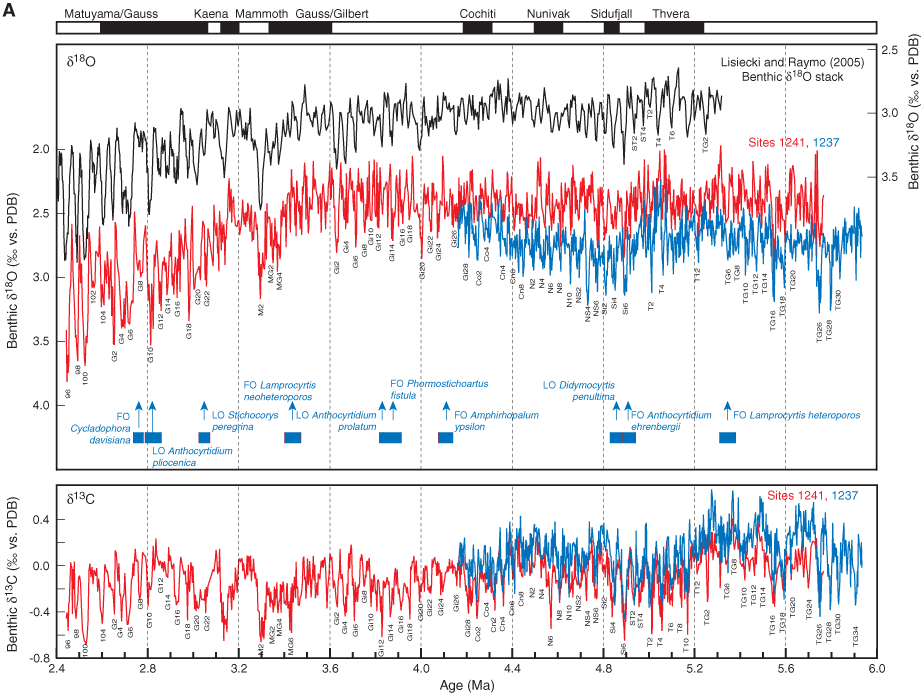 18O stack of Lisiecki and Raymo (2005), which is also based on an orbitally tuned age model (LR04), is shown for comparison. The chronologies of assigned oxygen isotope stages between Leg 202 records and the
18O stack of Lisiecki and Raymo (2005), which is also based on an orbitally tuned age model (LR04), is shown for comparison. The chronologies of assigned oxygen isotope stages between Leg 202 records and the  18O-LR04 stack agree within their error ranges of a few thousand years, except for the time interval older than 4.9 Ma, where the structure of Leg 202 isotope stages deviate from those presented by Lisiecki and Raymo (2005). Oxygen and carbon isotope stages are numbered following the numbering scheme of Shackleton et al. (1995a), which is firmly linked to the underlying 41-k.y. isotope cycles. Even numbers indicate cold stages and odd numbers indicate warm stages. Letters in front of marine isotope stages identify the magnetic polarity interval. For example, the first cold stage of the Sidufjall Chron is called Si2 and the first cold stage occurring in the magnetic interval between the Sidufjall and Thvera is called ST2. FO = first occurrence, LO = last occurrence. PDB = Peedee belemnite. B. Records of orbital obliquity and
18O-LR04 stack agree within their error ranges of a few thousand years, except for the time interval older than 4.9 Ma, where the structure of Leg 202 isotope stages deviate from those presented by Lisiecki and Raymo (2005). Oxygen and carbon isotope stages are numbered following the numbering scheme of Shackleton et al. (1995a), which is firmly linked to the underlying 41-k.y. isotope cycles. Even numbers indicate cold stages and odd numbers indicate warm stages. Letters in front of marine isotope stages identify the magnetic polarity interval. For example, the first cold stage of the Sidufjall Chron is called Si2 and the first cold stage occurring in the magnetic interval between the Sidufjall and Thvera is called ST2. FO = first occurrence, LO = last occurrence. PDB = Peedee belemnite. B. Records of orbital obliquity and  13C from Sites 1237 and 1240 in comparison with the
13C from Sites 1237 and 1240 in comparison with the  13C record from Site 846, which was one of the key records used to create the LR04
13C record from Site 846, which was one of the key records used to create the LR04  18O stack (see A). The two age models deviate from each other prior to 4.9 Ma.
18O stack (see A). The two age models deviate from each other prior to 4.9 Ma.

![]()